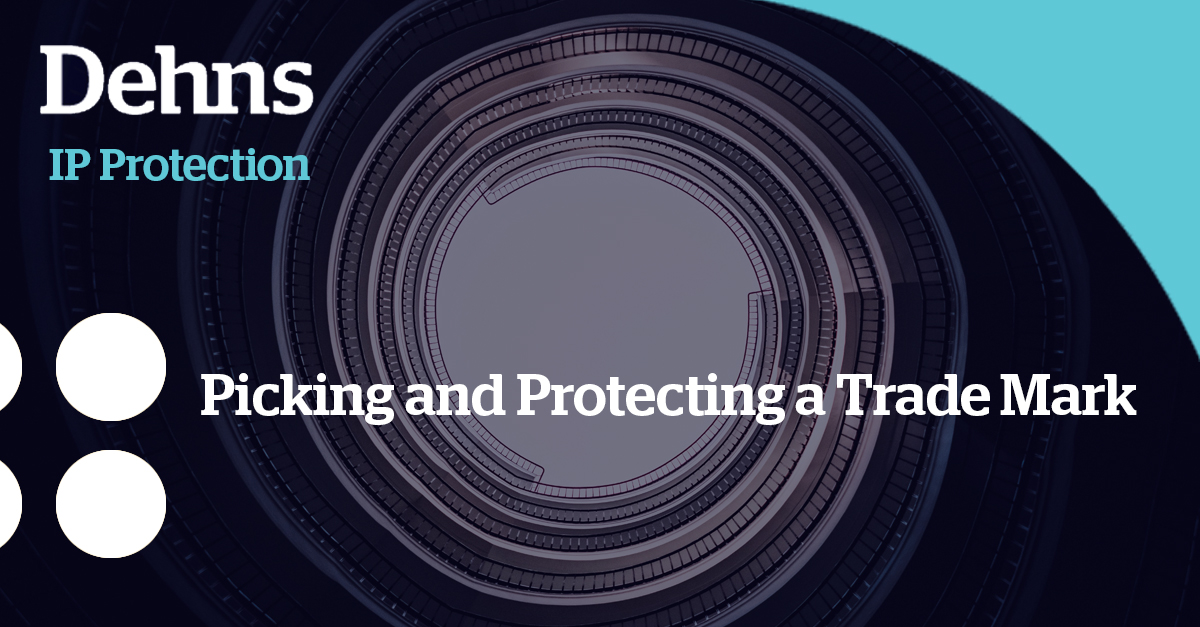
How to pick the right trade marks and ensure they are adequately protected.
Pick the right name
Picking a brand name which is descriptive of your goods/services may seem like a good idea because it will mean that potential customers immediately know what it is you are offering but, from a legal perspective, it is a recipe for disaster. The strongest brand names are those which are invented or meaningless in relation to the goods/services in question – think ADIDAS sportswear or APPLE computers/phones (note: APPLE is, of course, a dictionary word but has no meaning or relevance in relation to computers or phones). It may take the public a while to get to know such names but, when they have, they won’t forget them or confuse them with other brand names. On the other hand, a brand name which is descriptive of your product or service is equally descriptive of your competitors’ products/services so will not be able to do what a trade mark is supposed to do, i.e. prevent consumer confusion.
Search existing trade marks
You may believe you have come up with an amazing new brand name but, if you have not carried out searches of existing trade marks, there is no guarantee you will be free to use that name. This is because the owner of an earlier registered trade mark can stop third parties using an identical or similar mark in relation to identical or similar goods/services. The last thing a new business needs is to invest valuable time and money on a particular brand name only to find itself being accused of trade mark infringement a few months down the line and possibly having to go through the inconvenient and potentially expensive process of re-branding.
The UK Intellectual Property Office (UKIPO) has an online search facility (www.gov.uk/search-for-trademark) which enables you to look up details of registered trade marks which have legal effect in the UK. Alternatively, seek assistance from a trade mark attorney who will be able to carry out searches for you.
Register your trade mark
Obtaining a registration for your trade mark in respect of the products/services that you intend to offer provides you with legal certainty. A registration will enable you to stop others using marks which are confusingly similar to yours. A registration is also a piece of property and is something that potential investors will want or expect you to have.
The UKIPO website has a user-friendly section about applying for a UK trade mark registration (www.gov.uk/how-to-register-a-trade-mark). Once a mark is registered, protection initially lasts for ten years dating from the application date and can be renewed by further ten-year periods.
If your commercial plans extend beyond the UK, you should think about applying for registered trade mark protection in the other countries where you intend to offer your goods/services.
Ensure your registration covers the right goods/services
Once a trade mark application has been filed, the list of goods/services that it covers cannot be expanded. Therefore, it is important to think about exactly what you intend to offer to your customers and make sure that your application covers everything of interest. It can be useful to carry out a search of trade mark registrations owned by other businesses operating in your commercial field and see what goods/services they cover.
Protecting trade marks can be a pain-free process but it is not always plain sailing. Here at Dehns we help our clients at every step of their trade mark journey. We carry out clearance searches for new brand names, advise on whether trade marks are capable of achieving registered protection, and guide our clients through the registration process (whether protection is being sought here in the UK or overseas). We also advise our clients on their legal position should others adopt similar trade marks.
If you need any advice or assistance in relation to obtaining or enforcing intellectual property rights, please contact us at info@dehns.com or www.dehns.com








